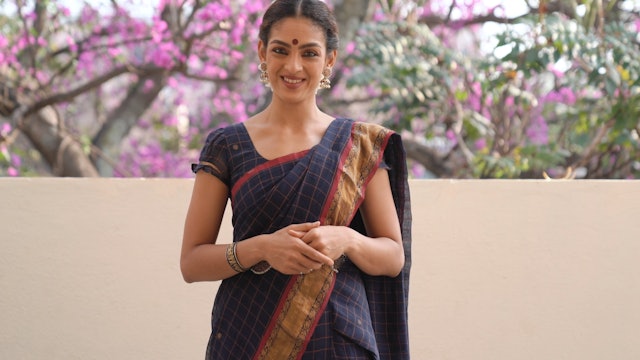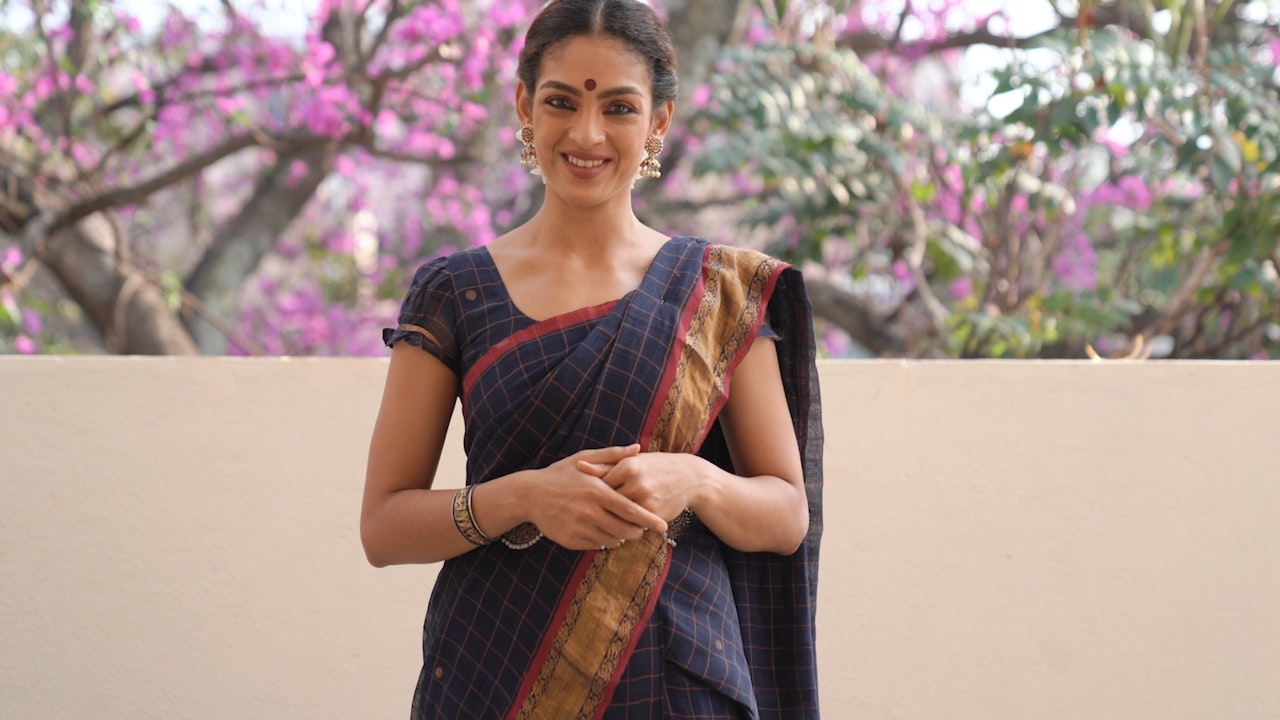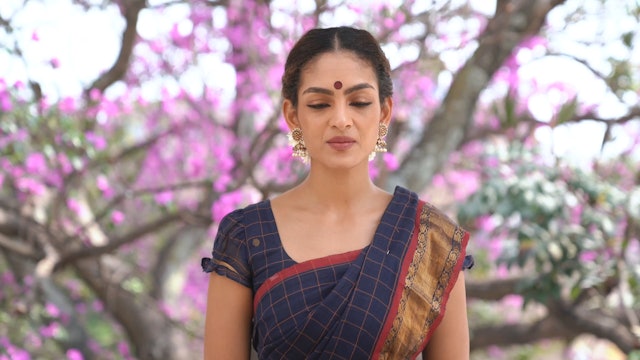Natyashastra & Abhinaya Darpana
2 Seasons
The Hastas, Bhedas & Sthanas will be dealt with in this series. The Natyashastra will be used as the primary reference point, but a few examples from the Abhinaya Darpana will also be given.
All the shlokas from the Natyashastra and Sangita Ratnakara are taught in the lineage of Dr Padma Subramanyam and are a product of her research.
-
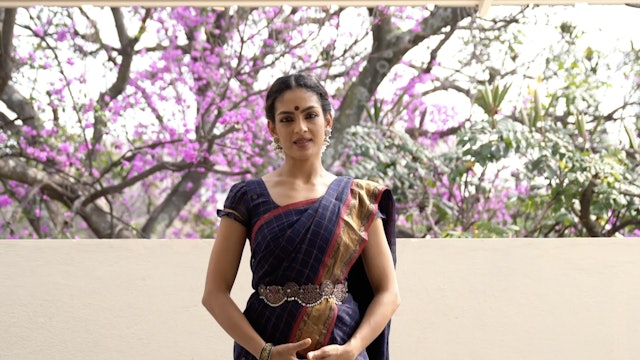 00:22Episode 25
00:22Episode 25Bāhu bheda Introduction
Episode 25
The arms considered one of the Upāngas, or minor limbs, has many movement possibilities enumerated in the Natyasāstra.
The movements are used primarily to communicate meaning in the context of gesture and also clear articulation in dance or nritta.
-
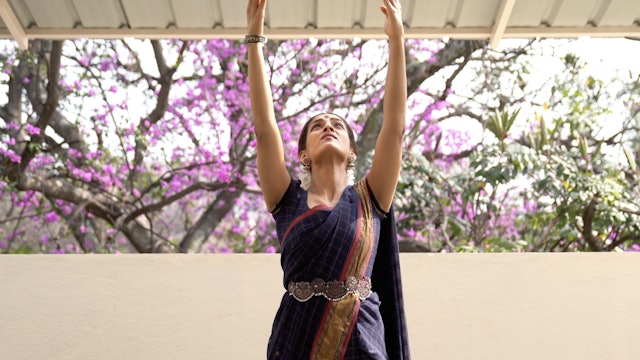 00:34Episode 26
00:34Episode 26Bāhu bheda Shloka
Episode 26
The arms considered one of the Upāngas, or minor limbs.
The movements are used primarily to communicate meaning in the context of gesture and also clear articulation in dance or nritta.
Please refer to the Shloka below for pronunciation. Please note that the separate movements of the head when...
-
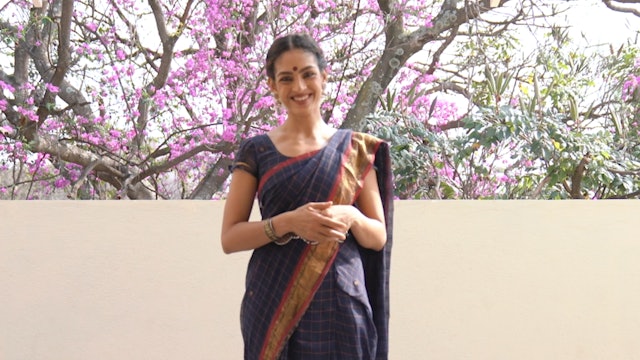 00:37Episode 27
00:37Episode 27Ćarañāguli bheda Introduction
Episode 27
The toes are considered one of the Upāngas, or minor limbs.
The movements are used primarily to communicate meaning in the context of gesture.
-
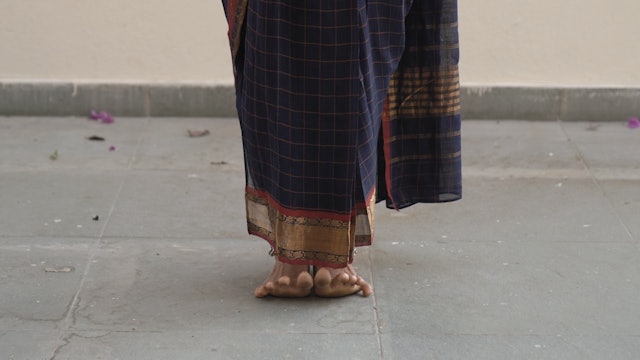 00:17Episode 29
00:17Episode 29Ćarañāguli bheda Shloka
Episode 29
The toes are considered one of the Upāngas, or minor limbs.
The movements are used primarily to communicate meaning in the context of gesture.
Please refer to the Shloka below for pronunciation. Please note that the separate movements of the head when put together in a Shloka form 'Sandhis', or...
-
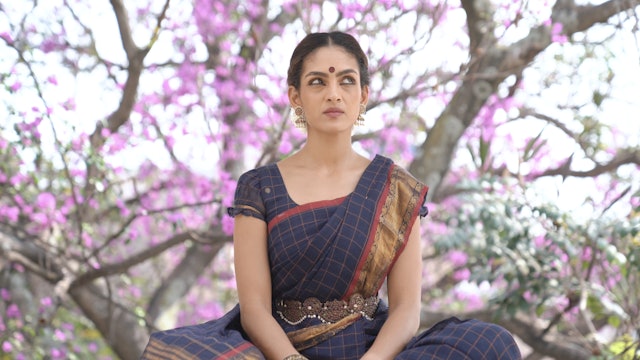 00:37Episode 33
00:37Episode 33Driśti bheda Introduction
Episode 33
The eye movements are considered one of the Mukhaja, or gestures of the face according to the Nātyasāstra.
The movements are used primarily to communicate meaning in the context of gesture.
-
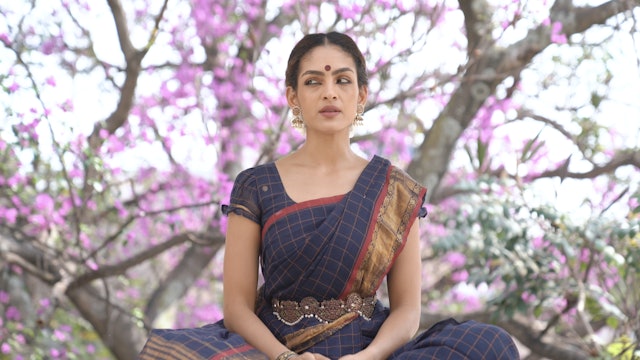 00:38Episode 34
00:38Episode 34Driśti bheda Shloka
Episode 34
The eye movements are considered one of the Mukhaja, or gestures of the face according to the Nātyasāstra.
The movements are used primarily to communicate meaning in the context of gesture.
Please refer to the Shloka below for pronunciation. Please note that the separate movements of the head w...
-
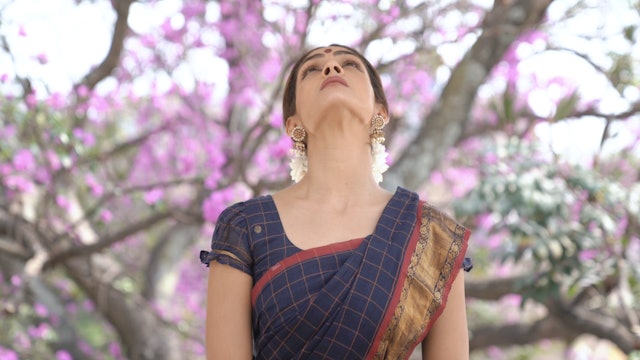 00:35Episode 36
00:35Episode 36Grīva bheda Introduction
Episode 36
The neck movements are considered one of the Mukhaja, or gestures of the face according to the Nātyasāstra.
The movements are used primarily to communicate meaning in the context of gesture.
-
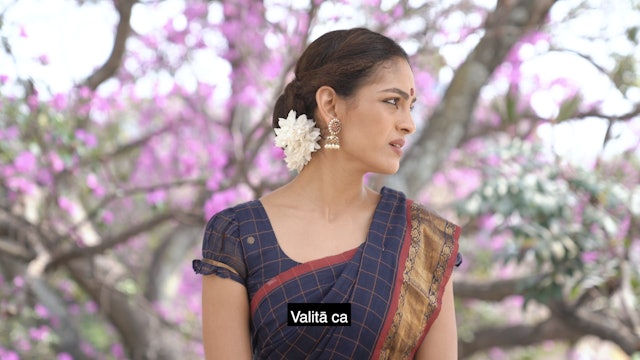 00:26Episode 36
00:26Episode 36Grīva bheda Shloka
Episode 36
The neck movements are considered one of the Mukhaja, or gestures of the face according to the Nātyasāstra.
The movements are used primarily to communicate meaning in the context of gesture.
Please refer to the Shloka below for pronunciation. Please note that the separate movements of the neck ...
-
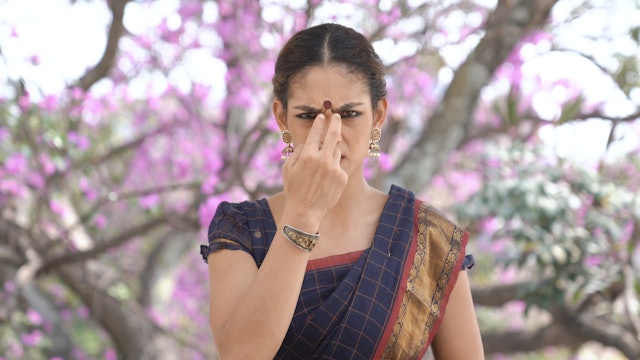 00:27Episode 32
00:27Episode 32Bru bheda Introduction
Episode 32
The eyebrows are considered one of the Mukhaja, or gestures of the face according to the Nātyasāstra.
The movements are used primarily to communicate meaning in the context of gesture.
-
00:17Episode 35
Bru bheda Shloka
Episode 35
The eyebrow movements are considered one of the Mukhaja, or gestures of the face according to the Nātyasāstra.
The movements are used primarily to communicate meaning in the context of gesture.
Please refer to the Shloka below for pronunciation. Please note that the separate movements of the he...
-
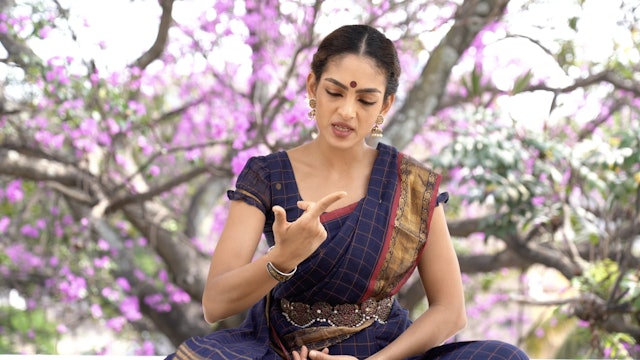 00:41Episode 38
00:41Episode 38Hastakaranas Introduction
Episode 38
The movements of the wrists and fingers according to the Nātyasāstra.
-
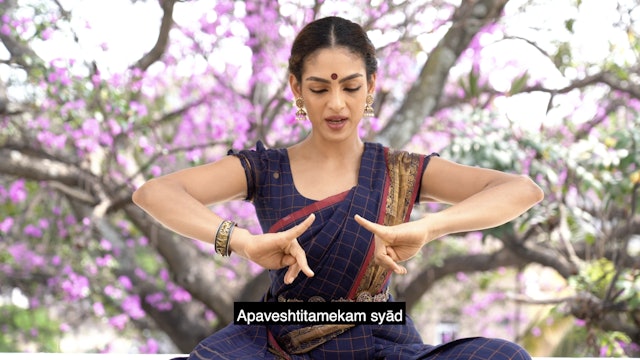 00:24Episode 40
00:24Episode 40Hastakarana Shloka
Episode 40
The movements of the wrists and fingers according to the Nātyasāstra.
apaveśtithameka syāth udveśtithamathaparam
vyāvartitam tritīyantu ćaturtham parivartitamapaveśtitham
udveśtitham
vyāvartitam
parivartitam -
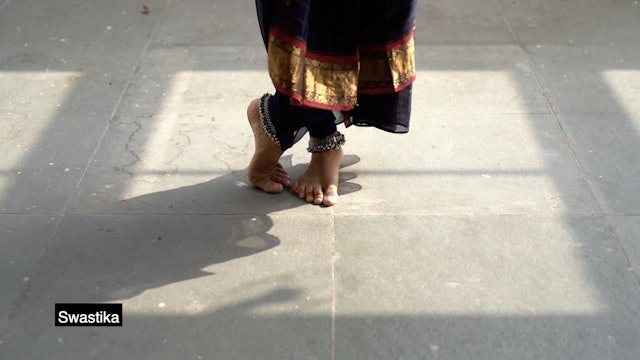 00:38Episode 42
00:38Episode 42Feet Positions and movements
Episode 42
These feet positions are a collection from various texts to help us better understand the karanās in the Nātyasāstra.
(These are taught according to the Bharatanritya school, as researched by Dr Padma Subrahmanyam)
samam
parśvam
trayśram
anćitam
kuñćitam
agratalasanćāram
sūći
svastikam
udghatti... -
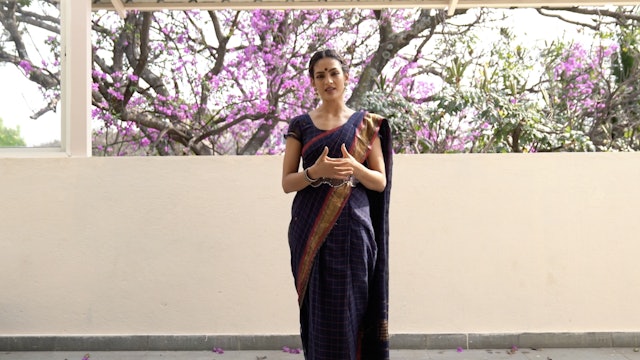 00:52Episode 29
00:52Episode 29Sthānakās Introduction
Episode 29
Though the Sthānakās, or static positions for male and female characters are not limited to be used only by a specific gender, they are the building blocks for Karanas.
-
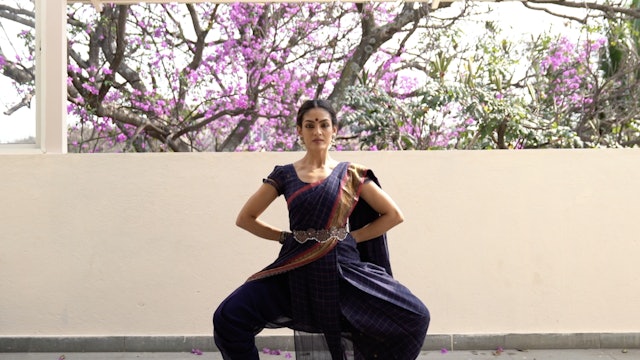 00:25Episode 31
00:25Episode 31Purusha Sthāna
Episode 31
Though the Sthānakās, or static positions for male and female characters are not limited to be used only by a specific gender, they are the building blocks for Karanas.
There are 6 Sthanakas for male characters.
Vaiśnavam samapādam ća vaiśakham mandalam tathā
pratyālīdam matālīdam sthanān yethā... -
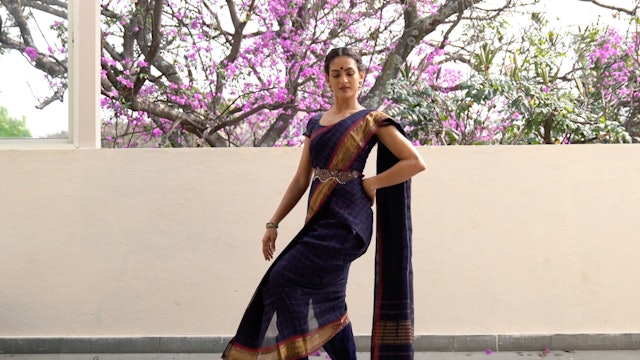 00:16Episode 30
00:16Episode 30Strī Sthānas
Episode 30
Though the Sthānakās, or static positions for male and female characters are not limited to be used only by a specific gender, they are the building blocks for Karanas.
Āyatam avahittam aśvakrāntamatāpi ća
Strīnām sthānāni kāryāni gatiśvabharaneśu ćaĀyatam
avahittam
aśvakrāntam
